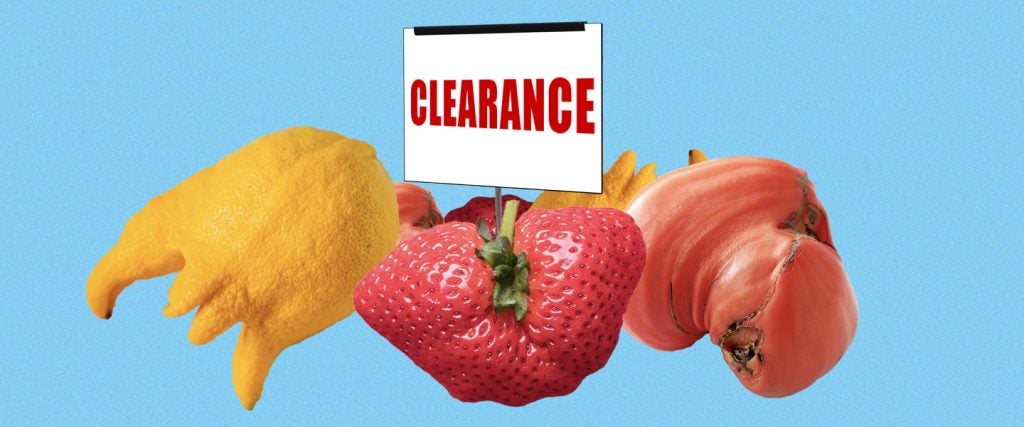We’re all guilty of body shaming fruits and vegetables. I know I am. If given the choice between an apple with a large discolored mass and a perfectly symmetrical one, the perfectly symmetrical one is going into my cart every single time.
Enough of the sad apples are left behind, however — the USDA estimates that a third of all produce goes uneaten, many for aesthetic reasons — that they’ve spawned a whole new industry. It’s called “ugly produce,” and over the last few years, numerous VC-backed companies have popped up in the space (Imperfect Produce, Full Harvest, Hungry Harvest, Misfits Market, etc.). Their business model is simple: They offer less-than-pristine produce at a discounted rate.
“Using the word ‘ugly’ to describe unattractive apples or carrots increases the purchase of this kind of produce because it corrects for consumers’ negative expectations of taste and quality,” Sid Mookerjee, a co-author of the report “From Waste to Taste: How ‘Ugly’ Labels Can Increase Purchase of Unattractive Produce,” told CBS MoneyWatch.
The labeling is most effective when accompanied by a moderate (read: not steep) price cut. “A sharper price reduction suggests the produce has flaws beyond its appearance,” per Mookerjee’s report.
But Brian Roe, a professor in the Department of Agricultural, Environmental and Development Economics at Ohio State University, tells me that there are more effective ways to mitigate some of these food waste issues than discounts. Case in point: He and his team surveyed 1,300 U.S. residents who shopped and cooked for their households. They found that participants consistently disliked any kind of ugly produce. Price didn’t sway them either; if anything, it only further cemented their opinion that the produce was shitty.
Two things, though, could get them to change their minds: “Accentuating the naturalness and nutrition of these items while also emphasizing that buying these products can reduce food waste,” Roe explains.
So why then does most of the marketing center around discounted pricing? “The original thought was, ‘Better to sell for something than nothing,’” says Roe. “But as we’ve learned, these lower prices don’t provide enough of an incentive for farmers to continue their harvest if the fraction of remaining product in the field might be deemed ‘ugly.’”
The thing is, ugly produce doesn’t necessarily go to waste if it goes unpurchased (or unharvested). “When a crop is complete, farmers plow everything back into the soil,” Sara Taber, a crop scientist who worked on farms for a decade, told Vox in 2019. “Some of it ends up as organic matter that is supporting soil health, and that’s okay, too. And a lot of ugly produce ends up being fed to animals when there’s no human market for it. Melons, for example, have no soft market, so they’re fed to cattle and pigs. But then you have people going, ‘Oh, my god, it’s wasted!’ But somebody ate it. So is that really waste? No.”
That said, Roe still believes that recasting ugly produce as “being more natural and as reducing wasted food” is a worthwhile endeavor for those serious about decreasing, albeit marginally, the amount of food that gets thrown away every year. “If you want to move into the ugly produce space, you probably need to rebrand it rather than locking in a discount and saying, ‘This is ugly food that should be worth less, so let’s just lock it in as being an inferior good from the get-go,’” he told Ohio State News.
Instead, Roe tells me that the focus should be on accentuating the positive aspects of ugly produce — most of all, that there’s no nutritional difference between fruits and vegetables that look weird and those that don’t. For him at least, if the average consumer could understand this, there would be no ugliness at all. The exact opposite, actually: It would be a thing of beauty.

